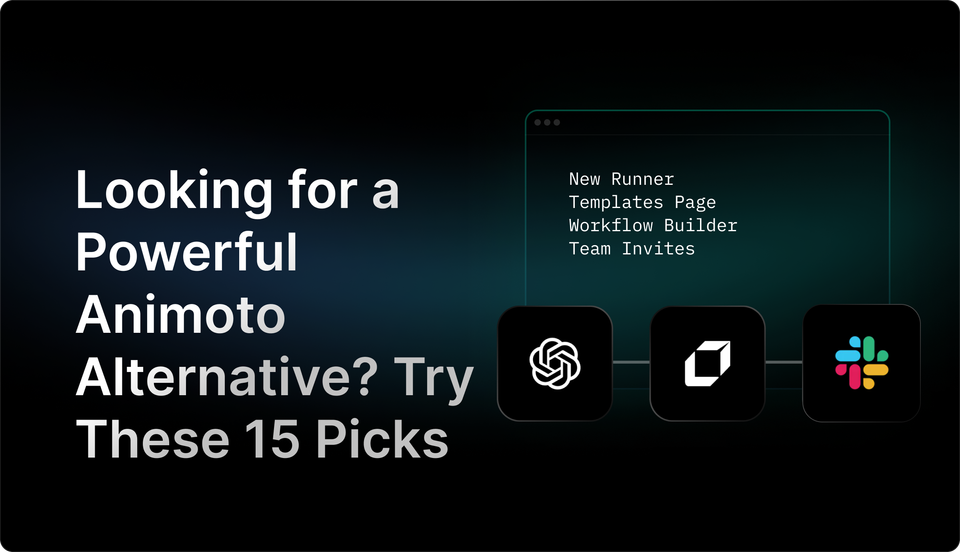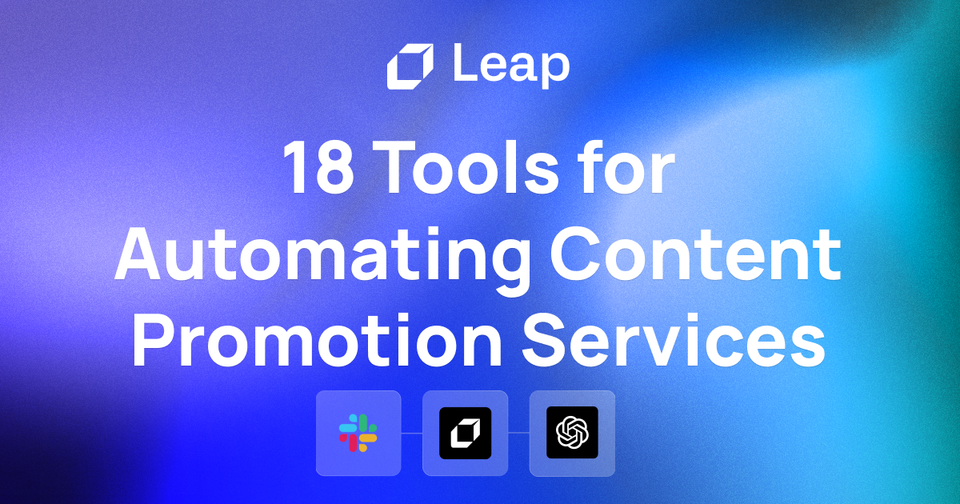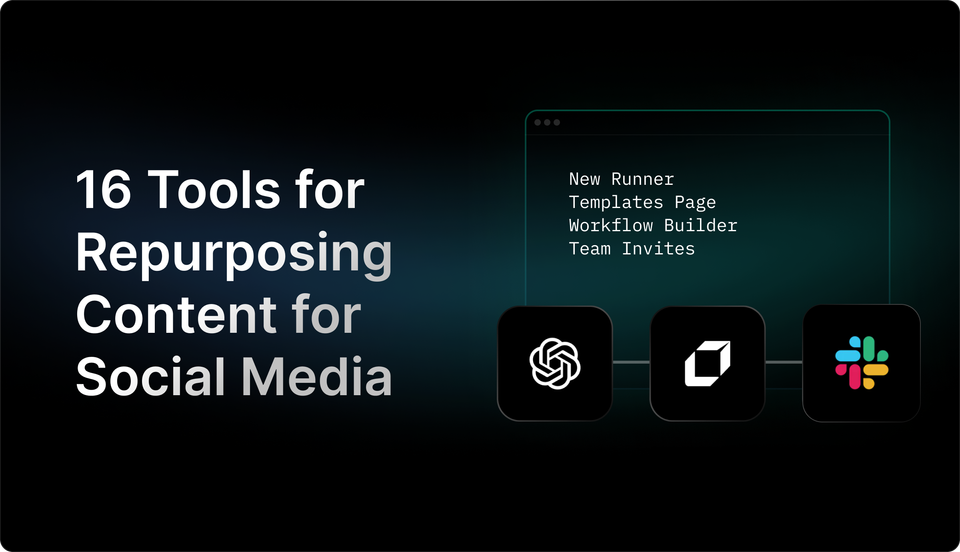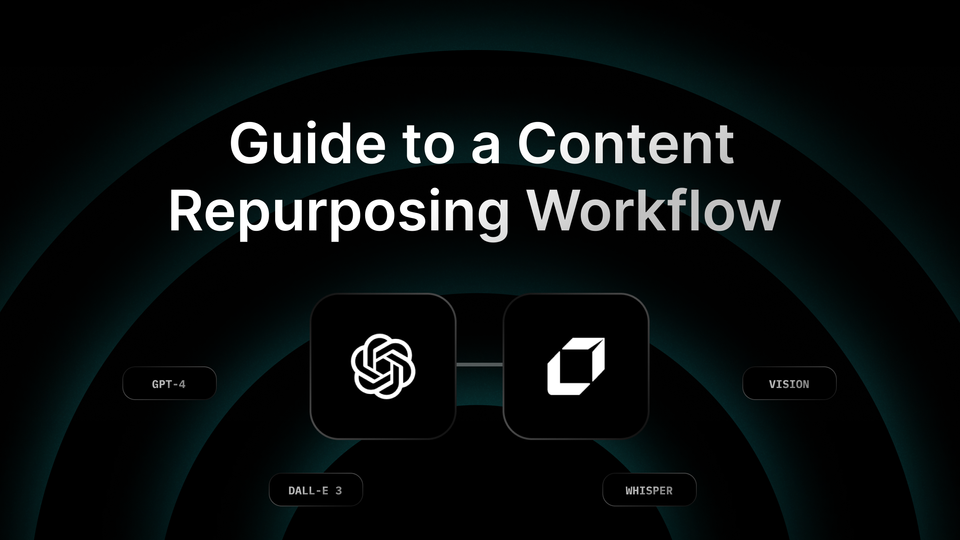18 Powerful Tools to Optimize Your Content Promotion Strategies
Boost your content promotion strategies with these tools designed to increase visibility and engagement. Don't miss out on these resources.
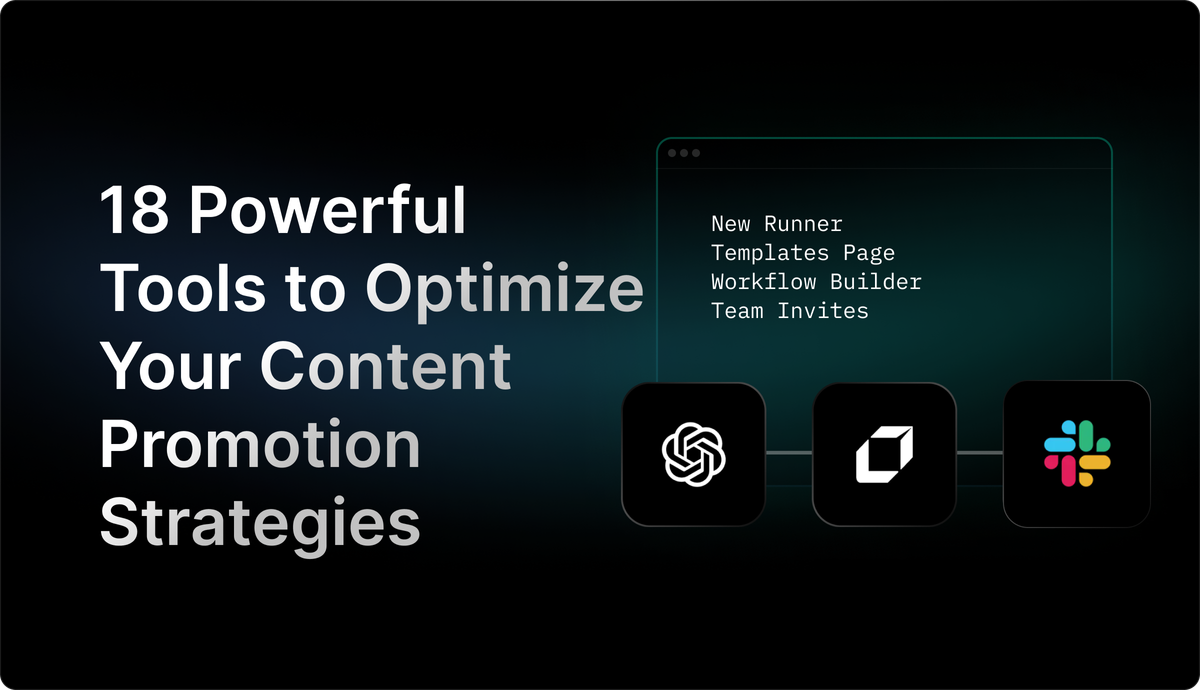
In today's competitive digital landscape, having a solid content promotion strategy can make all the difference for businesses trying to stand out online. Knowing how to promote your content effectively will not only help drive more traffic to your site, but it will also increase your brand's visibility and engagement with your audience. Understanding the various channels and tactics available for promoting your content can further optimize your content distribution and get your message in front of more of the right people.
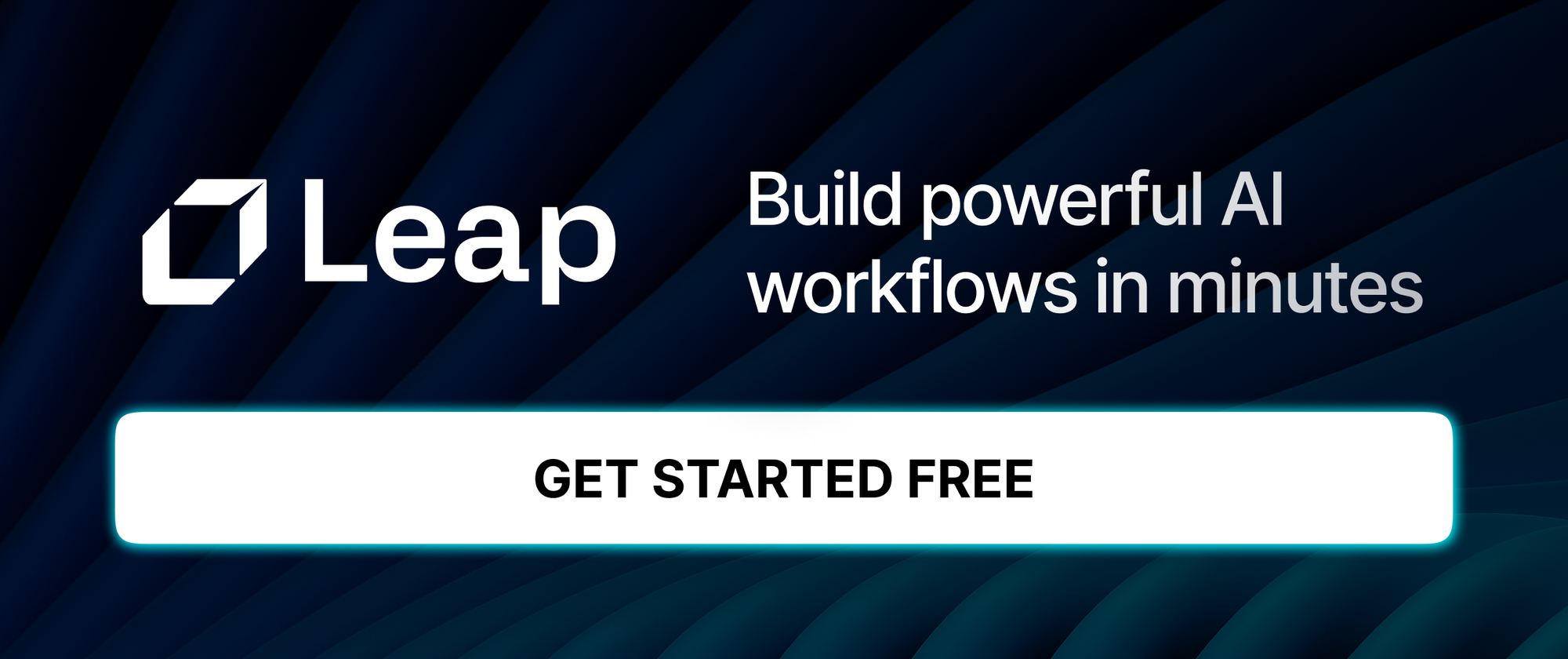
What Is a Content Promotion Strategy and Why Its Important

Content promotion is a crucial aspect of digital marketing. Contrary to common belief, creating amazing content is not enough! You can write the best blog post, craft the most engaging infographic, or create a webinar that everyone should see. But without promoting that content, it'll be hard to reach your audience.Content promotion is the process of distributing and amplifying content to increase its visibility, reach, and engagement among a desired audience. Without promotion, whatever ground-breaking piece of content you’ve created likely won’t have a chance to reach its goals. Content promotion can help you achieve various goals, such as increasing your brand awareness, driving more traffic to your website, generating more leads, or boosting sales.
Significance of Content Promotion
Why is content promotion important? The content promotion enables companies to drive organic traffic, reach new audiences, and improve conversion rates. Both startups and well-established brands develop long-term strategies and plans for content creation to resonate with their audiences. Quality content is a must for any business since it helps attract prospects and bring new customers.
Expanding Audience Reach through Content Promotion Channels
If a company has entered the market recently, it doesn’t have the authority and love of many people. The audience is small. To increase it, business owners promote their content. Today, you can encounter various channels that effectively promote blog posts, services, podcasts, videos, and products for free and for a certain fee. You should only choose the most suitable one.
Building Customer Relationships and Trust through Marketing Strategies
With social media, PR, PPC ads, and influencer marketing, you can introduce your product to users. Once people know your company better from your content, they’ll consider using your product. Eventually, you can build strong relationships with users, establish trust, and gain a big customer base.

Related Reading
- Content Promotion
- Content Repurposing
- Content Distribution Strategy
- How To Repurpose Content
- Content Distribution Platforms
8 Content Promotion Strategies to Make Your Content More Visible

1. Social Media Sharing
When it comes to promoting your content on social media, there are several tactics you can leverage to maximize visibility and engagement. One of the most critical factors is timing. Knowing when your target audience is most active on social media platforms can significantly impact the success of your content promotion efforts.
Hashtags are another powerful tool for increasing visibility. By using relevant hashtags, you can reach a broader audience interested in your content. Engagement plays a crucial role in social media sharing. Encouraging likes, comments, and shares can help your content reach a wider audience through social media algorithms.
2. SEO Techniques
Search engine optimization (SEO) is a fundamental strategy for enhancing visibility, especially for organic content promotion. Important SEO techniques include keyword optimization, link building, and metadata utilization. By conducting keyword research and incorporating relevant keywords into your content, you can increase the chances of your content appearing in search engine results.
Link building involves acquiring backlinks from reputable websites, which signals search engines about your content's authority. Metadata, including meta titles and descriptions, provides search engines with information about your content, influencing its visibility in search results.
3. Email Marketing
Email marketing is an effective strategy for promoting content to a targeted audience. By segmenting your email list based on demographics, interests, or past behavior, you can personalize content suggestions to increase relevance and engagement.
Email newsletters can contain links to your content, inviting subscribers to read, share, and engage with it. Including a call-to-action in your email can prompt readers to interact with your content in various ways, such as sharing it on social media or leaving comments.
4. Influencer Outreach
Influencer outreach involves identifying relevant influencers in your industry and collaborating with them to reach new audiences. Influencers have established credibility and a loyal following, making them valuable partners in content promotion.
By engaging with influencers through collaborations, such as guest posts, social media takeovers, or product reviews, you can tap into their audience and increase your content's visibility.
5. Paid Advertising
Paid advertising offers a way to boost content visibility through platforms like Google Ads and social media ads. By creating targeted ad campaigns, you can reach specific audiences interested in your content. Paid advertising allows you to set budgets, target demographics, and track performance metrics to optimize your content promotion efforts.
6. Guest Blogging
Guest blogging is a valuable content promotion strategy that involves writing and publishing articles on other websites in your industry. By guest posting, you can reach new audiences, build backlinks to your site, and establish authority in your field. Finding guest blogging opportunities can involve reaching out to websites in your niche, building relationships with editors, and pitching relevant content ideas.
7. Webinars and Live Streams
Webinars and live streams provide interactive content promotion opportunities to engage directly with your audience. By hosting live events, you can discuss your content, answer questions, and receive immediate feedback from viewers. Webinars and live streams create a sense of urgency and exclusivity, encouraging audience participation and content sharing.
8. Repurposing Content
Repurposing content involves transforming existing content into new formats to reach different audience segments. By converting written content into videos, infographics, or podcasts, you can appeal to different preferences and increase content visibility. Repurposing content also allows you to extend the lifespan of your content, reaching new audiences and maximizing your content promotion efforts.
18 Powerful Tools to Optimize Your Content Promotion Strategies

1. Leap AI
I would recommend Leap AI for content promotion strategies as it can effectively generate high-quality images, fine-tune models for specific content needs, and even create license-free music. This tool can enhance the visual and auditory appeal of promotional content, making it more engaging for social media, blogs, and advertising campaigns.
Leap AI’s ability to integrate seamlessly with other tools allows for streamlined workflows, automating parts of the content promotion process. By leveraging AI to optimize content, Leap AI can help tailor promotional materials to better meet the needs of the target audience, potentially increasing engagement and the effectiveness of promotions.
2. Buffer
Buffer offers a suite of tools to help you get the most out of your social media channels. You can schedule and post your content to different social media networks automatically, manage all your social media accounts from one place, and use the built-in analytics software to measure the success of your campaigns.
3. Hootsuite
Hootsuite provides similar scheduling, management, and reporting tools to Buffer, but it’s a much more advanced tool overall and offers additional functionality. With Hootsuite, you can also curate and manage content easily, monitor and respond to mentions across several social media platforms, manage all your team accounts with custom permission levels, and more.
4. MeetEdgar
MeetEdgar is another social media scheduling tool that actually writes your status updates for you, taking quotes from your content. Other features include category-based scheduling, continuous posting from your content library, A/B testing, and analytics.
5. LinkedIn Pulse
LinkedIn Pulse is LinkedIn’s own personalized newsfeed for its users. Members can self-publish their own content and share it with their audience. Each user only sees the content that’s of interest to them. LinkedIn is a particularly effective marketing tool for B2B companies and thought leaders to build professional relationships and reach a wider audience.
6. Viral Content Bee
Viral Content Bee is a free tool that helps you to get social media shares from influencers on Twitter, LinkedIn, Tumblr, and Pinterest. The influencer gets high-quality content to share with their audience, and the content marketers get increased exposure and engagement.
7. Medium
Medium allows content creators to re-post their best articles on a platform that has over 60 million users each month. The platform has become extremely popular as it focuses on high-quality content and its algorithms can’t be manipulated with likes and shares. The content that is read the most performs the best and reaches the widest audience.
8. Taboola
Taboola is a content recommendation platform that puts your content and videos at the end of blog posts and news articles of premium publishers, helping your content reach a broader audience. This premium service comes with tools to help you drive conversions, segment your audience, retarget users, and optimize your content ads to improve ROI.
9. BuzzSumo
Buzzsumo helps marketers find the most widely shared content across the web and who is sharing it. This tool can help identify characteristics of viral content and influencers who share content about similar topics, to build outreach lists to connect with them.
10. GaggleAmp
GaggleAmp focuses on employee advocacy, enabling admins to provide users (employees) with content to share on their network, expanding your reach effectively.
11. Outbrain
Outbrain is a content syndication network that promotes your content across a wide network of publishers. The platform makes content recommendations to web users, with a range of targeting options to help you reach your ideal audience and optimize campaigns.
12 .Mailshake.com
Mailshake.com helps you find email addresses, Twitter handles, and contact forms to promote your content, with proven templates for outreach, saving time and increasing response rates.
13. Zapier
Zapier can automate tasks like adding things to your buffer when tagged correctly in a Slack chat group, helping you promote content more efficiently.
14. IFTTT
IFTTT allows you to automate processes like sharing Instagram posts as images on Twitter, increasing engagement effectively.
15. Zemanta
Zemanta promotes articles on contextually relevant sites, blogs, and other articles, helping you find the right places to reach your audience effectively.
16. Hello Bar
Hello Bar is an easy-to-set-up tool that collects email addresses without being intrusive, helping you build your email list effectively.
17. CoSchedule
CoSchedule helps you schedule the repeated sharing of blog posts on different channels, maximizing the reach and effectiveness of your content promotion strategies.
18. Broca
Broca uses deep learning AI to automate content creation, simplifying workflow and enabling you to scale your amplification efforts effectively.
How to Measure the Success of Your Content Promotion Strategies
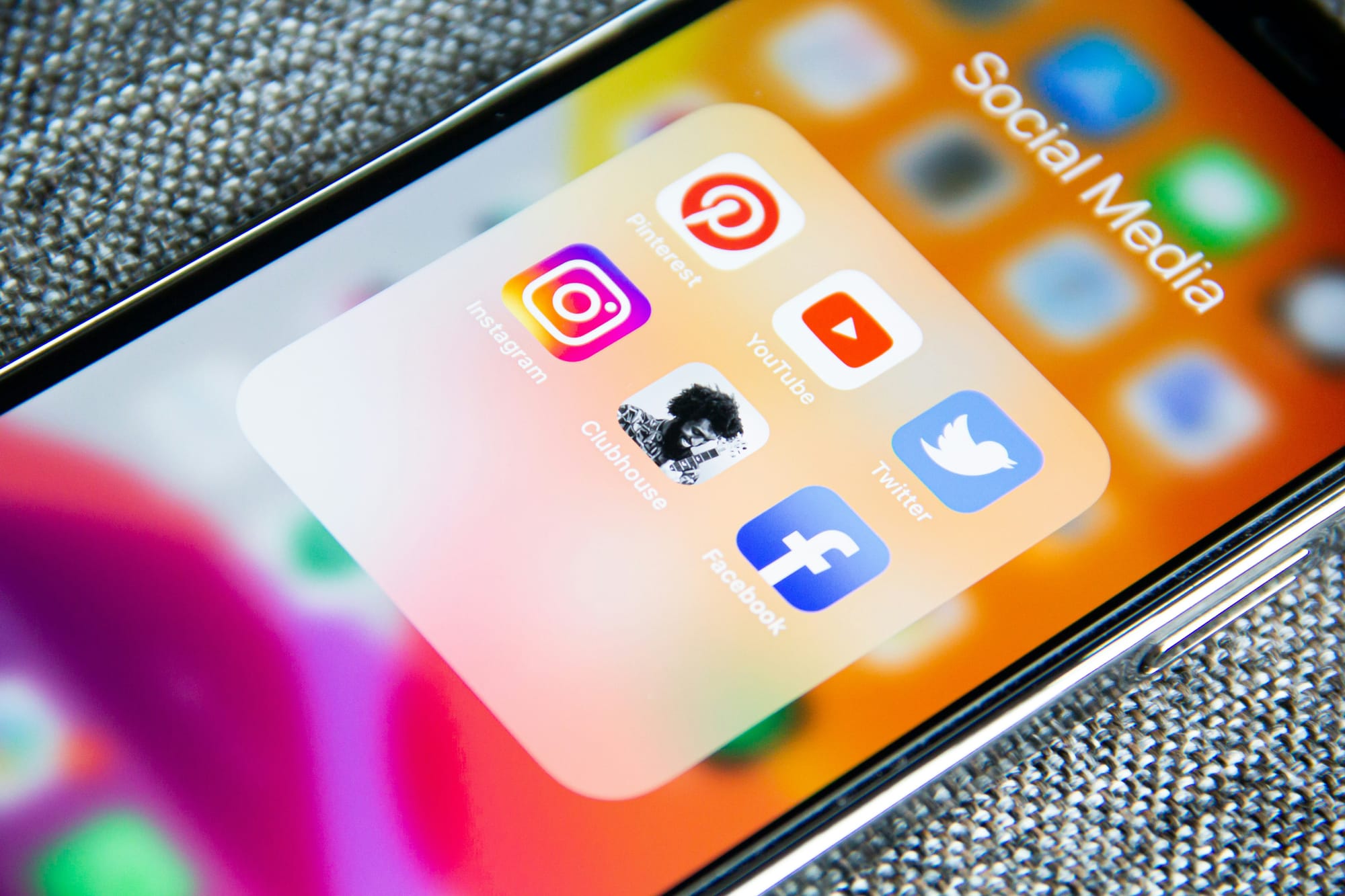
When evaluating the effectiveness of content promotion strategies, it is crucial to establish Key Performance Indicators (KPIs) that are quantitative, relevant, and easy to calculate. These KPIs should be able to measure performance over time and across different levels of the conversion funnel. Content Metrics that can be used as KPIs include Conversion KPIs, Reputation KPIs, Engagement KPIs, and Content Metrics.
Conversion KPIs
Leads
Tracking the number of leads generated by a piece of content helps in understanding customer preferences and the type of content that generates qualified leads.
Transactions & Revenue
E-commerce businesses can use Google Analytics to track e-commerce revenue and transactions. This allows for the analysis of which content generates the most revenue or transactions.
Goal Completions
Goal completions can be tracked using Google Analytics, which allows the monitoring of conversions without a dollar value. This can include filling out a form, making a call, or joining an email list.
Reputation KPIs
Influencer Mentions
Tracking mentions from industry influencers helps in understanding the reputation of the content. Tools like Sparktoro or Google Alerts can be used to track mentions.
Keyword Ranking
Tracking keyword rankings using tools like Ahrefs or SEMrush is essential for understanding the success of a content campaign. High rankings in Search Engine Results Pages (SERPs) help in improving brand exposure.
Share of Voice
Share of Voice (SoV) measures how visible a set of keywords is on Google. It helps in understanding how content affects brand exposure on search engine results.
Sentiment Analysis
Sentiment analysis measures reputation from social media mentions. It helps in understanding how people are talking about content campaigns on social media.
Engagement KPIs
Comments
Tracking comments on blog posts helps in understanding what topics resonate with users and spark conversations. Engaging with users in the comments section helps build brand loyalty.
Scroll Depth
Scroll depth tracking shows how far readers are scrolling down a page. This helps in understanding if readers are engaging with the content.
Time on Page
Time on page measures how long people spend reading content. Longer time spent on a page indicates higher engagement.
Pages Per Session
Pages per session or bounce rate shows how many pages visitors are viewing on the site. This helps in understanding if visitors are engaging with the content.
Return Customers
Tracking returning customers helps in understanding if they are engaging with the content and what types of content they interact with.
Likes & Shares
Monitoring likes and shares on social media helps in understanding engagement and reputation of the content.
Backlinks
Backlinks are crucial for content as they indicate the respect or enjoyment people have for the content.
Open and Click-Through Rates
These KPIs measure conversions and engagement with email marketing campaigns.
Page Views
Page views are the most common metric for measuring content success. They indicate how widely the content is being viewed.
Track Costs
Content promotion strategies should include tracking of content creation costs and promotion costs.
Measure Performance
Use analytics tools like Google Analytics to track user interaction with the content and implement conversion tracking on the website.
Calculate ROI
Revenue attribution to content pieces help in understanding how different content types contribute to sales. Use ROI insights to refine content strategy and improve performance.
Related Reading
- Content Repurposing Workflow
- Repurposing Content For Social Media
- Content Promotion Services
- Video Content Distribution
- Animoto Alternative
- Social Media Distribution
- Content Repurposing Service
- Repurpose Video Content
- Paid Content Distribution
- Content Distribution Software
Handling Challenges and Setbacks in Content Promotion

In today's digital landscape, the immense volume of content available can make it challenging for a single piece to gain traction. To combat this, it's essential to prioritize quality over quantity. When crafting content, focus on producing high-quality, unique material that offers clear value to your audience.
Embrace SEO best practices to boost visibility and consider niche targeting to reach specific segments more effectively. By concentrating on producing top-notch, valuable content and leveraging essential marketing tactics, you can help your material rise above the competition.
Targeting the Right Audience: Strategies for Effective Reach
Identifying and connecting with the right audience for your content can prove to be difficult, especially in a diverse market. To address this challenge, data analytics is your best friend.
Use data insights to gain a deeper understanding of your audience's preferences, segment your market, and tailor your content and promotional strategies to match the behaviors and tastes of each segment. By creating targeted, personalized content, you can increase engagement and boost conversions by speaking directly to your audience's needs.
Budget Constraints: Maximizing Results with Limited Resources
Budget limitations can hinder your ability to pursue promotional activities, particularly concerning paid advertising. When faced with tight budgets, it's crucial to prioritize strategies with the highest ROI.
Consider focusing on organic methods like SEO, social media engagement, and email marketing, as these cost-effective strategies can deliver substantial results over time. By wisely allocating your resources and engaging in efficient marketing tactics, you can achieve impressive results even with limited funds.
Keeping Up with Platform Changes: Adapting to Shifts in Algorithms
The ever-evolving nature of social media and search engine algorithms can have a significant impact on content visibility and ranking. To navigate these changes successfully, you must stay informed about the latest updates and adjust your content strategy as needed.
Engaging in continuous learning and possibly investing in professional development can help you stay ahead of the curve in the fast-paced world of digital marketing. By remaining adaptable and responsive to shifts in platform algorithms, you can ensure your content stays relevant and visible to your target audience.
Measuring Effectiveness: Using Data to Drive Decision-Making
Measuring the success of content promotion efforts can be challenging, especially when trying to quantify intangible metrics like brand awareness or customer engagement. To overcome this challenge, it's essential to establish clear KPIs before launching promotional campaigns and leverage robust analytics tools to track these indicators. By implementing a data-driven approach and closely monitoring your performance against your established KPIs, you can make informed decisions and adjust your strategies as needed.
Content Distribution: Maximizing Reach and Engagement
Effectively distributing content across appropriate channels to maximize reach and engagement can be a complex process. To optimize your content distribution efforts, develop a comprehensive strategy that leverages multiple channels, such as social media, email, blogs, and partnerships.
Consider the timing and frequency of your posts to enhance visibility and engagement with your target audience. By strategically distributing your content and aligning your efforts with the preferences of your audience, you can maximize reach and drive meaningful engagement.
Creating Engaging Content: Capturing and Retaining Audience Attention
In a world with an abundance of online content, capturing and retaining audience attention is increasingly challenging. To create compelling content that resonates with your audience, invest time in understanding their preferences and behaviors.
Incorporate interactive elements, compelling visuals, and actionable insights into your content to increase engagement and retention. By focusing on creating engaging and valuable content, you can cultivate a loyal audience base that actively engages with your brand and material.
Related Reading
• Missinglettr Alternatives
• Content Distribution Companies
• Repurpose Blog Content
• Content Distribution Services
• Socialpilot Alternatives
• Planable Alternatives
• B2b Content Distribution
• Repurpose Alternative
• Vidyo Ai Alternatives
• Meetedgar Alternatives
• Visme Alternatives
• Lumen5 Alternative
• Content Promotion Tools
Create Game Changing Automations Today With Leap’s AI Workflows

When it comes to content promotion strategies, there are several avenues that can be explored to ensure maximum reach and engagement. One of the ways to achieve this is by utilizing the power of AI-enabled tools like Leap. Leap allows you to automate your work by creating custom AI automations with no-code, enabling you to connect the tools you love with best-in-class AI text, image, and audio models.
Through seamless integrations with platforms like OpenAI and Microsoft, you can supercharge your existing tools to create sophisticated AI automations that cover a wide range of tasks, from summarizing documents to automating SEO processes. With Leap's AI Workflows tool, the opportunities for automation are truly endless. So why not take advantage of such tools to streamline your content promotion strategies and boost your online presence?

